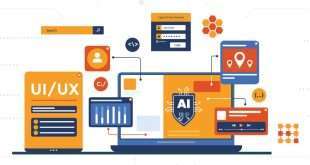In today’s rapidly evolving digital landscape, web accessibility has become a pressing concern. People with disabilities often face significant barriers when navigating websites, hindering their ability to access information and services online. However, a revolutionary solution has emerged – Voice-Controlled Navigation for Web Accessibility. This cutting-edge technology empowers users to interact with websites using their voices, making the online world more inclusive and user-friendly for all.
The Power of Voice-Controlled Navigation
Voice-Controlled Navigation leverages the power of speech recognition technology to enable users to browse websites, interact with content, and perform various actions using voice commands. This innovation breaks down the barriers faced by individuals with visual impairments, motor disabilities, or conditions that make traditional navigation methods challenging.
With Voice-Controlled Navigation, users can effortlessly access website content, navigate menus, fill out forms, and even execute complex tasks. This groundbreaking technology eliminates the need for traditional input methods like keyboards or mice, allowing users to interact with websites more intuitively.
Enhancing Web Accessibility through HTML Accessibility
To achieve comprehensive web accessibility, developers must prioritize HTML accessibility. HTML (Hypertext Markup Language) serves as the backbone of web content, defining the structure and presentation of information on websites. By adhering to best practices for HTML accessibility, developers can ensure that Voice-Controlled Navigation seamlessly integrates with web pages.
Essential aspects of HTML accessibility include providing alternative text for images, using semantic elements for proper content organization, and creating accessible forms with appropriate labels and input instructions. These practices not only benefit voice-controlled users but also improve the overall usability and search engine rankings of websites.
The Inclusive Web: A Priority for Website Owners
As web accessibility becomes a pivotal concern, website owners and businesses must recognize its importance and prioritize inclusive design. Embracing Voice-Controlled Navigation and HTML accessibility not only caters to a broader audience but also aligns with legal requirements in many regions, including the Web Content Accessibility Guidelines (WCAG).
An inclusive website not only fosters a positive user experience but also enhances brand reputation and fosters customer loyalty. The focus on accessibility sends a powerful message that the organization values diversity and inclusion.
Advantages of Voice-Controlled Navigation
The implementation of Voice-Controlled Navigation offers numerous advantages for both users and website owners:
Enhanced User Experience:
Voice navigation eliminates the need for manual input, making the user experience more natural and seamless.
Increased Reach:
By catering to users with disabilities, websites can tap into a larger audience and expand their reach.
Improved SEO:
Websites that prioritize accessibility tend to rank higher in search engines, as they provide a better user experience for all visitors.
Future-Proofing:
As technology continues to evolve, voice-controlled interfaces will likely become more prevalent. Early adoption positions websites for future advancements.
Compliance and Legal Benefits:
Ensuring web accessibility compliance helps businesses avoid potential legal issues and create a more inclusive digital environment.
Overcoming Challenges in Voice-Controlled Navigation
While Voice-Controlled Navigation holds immense potential, its successful implementation requires overcoming certain challenges:
Accuracy and Precision:
Speech recognition technology must achieve a high level of accuracy and precision to effectively interpret voice commands.
Multilingual Support:
Websites with a global audience need to support various languages to cater to users worldwide.
Privacy and Security:
As voice commands may involve sensitive information, ensuring privacy and data security is paramount.
Training and Familiarization:
Users may need to adapt to voice navigation, which may require clear instructions and user training resources.
Commonly Asked Questions
Q: Is Voice-Controlled Navigation suitable for all types of websites?
A: Yes, Voice-Controlled Navigation can be implemented on various websites, including e-commerce, informational, and service-oriented sites.
Q: What devices support Voice-Controlled Navigation?
A: Voice-Controlled Navigation is compatible with a wide range of devices, including smartphones, tablets, laptops, and smart home devices.
Q: Does Voice-Controlled Navigation require an internet connection?
A: Yes, as speech recognition typically relies on cloud-based processing, an internet connection is necessary.
Q: Can Voice-Controlled Navigation be used by individuals with speech impairments?
A: Yes, efforts are being made to enhance speech recognition accuracy for users with speech impairments.
Q: How can I implement Voice-Controlled Navigation on my website?
A: Web developers can integrate voice technology using APIs and libraries provided by speech recognition service providers.
Final Words
Voice-Controlled Navigation for web accessibility represents a groundbreaking advancement in the digital realm. By prioritizing HTML accessibility and embracing voice technology, website owners can create a more inclusive and user-friendly online experience. Enhancing web accessibility not only benefits individuals with disabilities but also contributes to better SEO rankings, broader audience reach, and improved user satisfaction. As technology continues to evolve, Voice-Controlled Navigation will undoubtedly play a key role in shaping the future of web accessibility. Embrace this revolutionary solution to ensure your website remains at the forefront of inclusivity and innovation
 webfily
webfily



